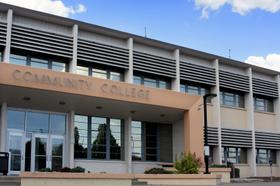Looking for a lucrative way to manage your “midlife crisis”? Maybe a career change is an answer. The good news is you don’t have to spend years preparing for a midlife career change today. Thanks to the wealth of options available at your local community college, you can explore a new profession in two years or less. Check out some of the top community college degrees for midlife career changers.
Accountant
Love crunching numbers? Perhaps now is the time to launch a new career in the accounting industry. Whether you lean toward tax preparation or financial planning, your community college degree in accounting or finance can get you on a rewarding career path. Use your previous professional experience and new training to land a position that fit perfectly with the financial industry. The U.S. Bureau of Labor Statistics estimates the average annual salary for accountants to be $61,690.
Interior Designer
Creative types can move away from the office grind by training for a new career in interior design. This field is a good choice for those who are high on taste and just need the education to back up their talents, according to Grindstone. This highly flexible job even allows you to begin working on small projects, perhaps under the watchful eye of a professional designer, while you are completing your education in your newly chosen field. Currently, the average annual salary for an interior designer is around $46,280.
Assisted Living Assistant
Seniors






















